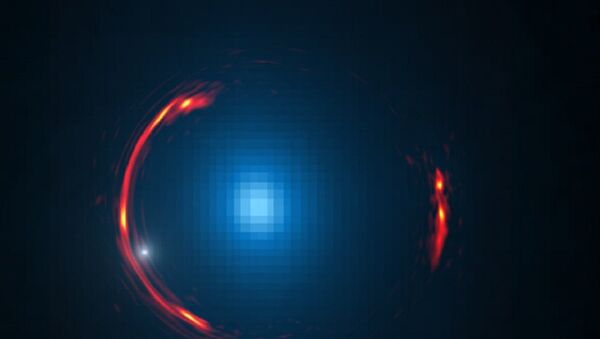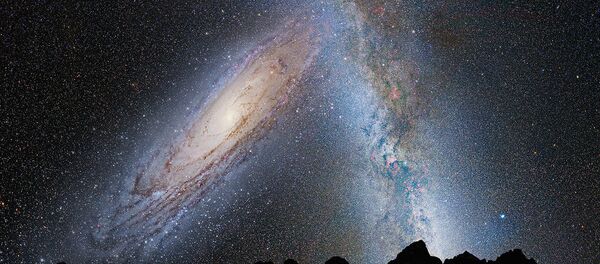Dark matter consists of 85 percent of all matter in the universe according to the Standard Theory of Cosmology, but since it doesn't interact with light in any way, we have no way of directly detecting it. However, dark matter is still matter and thus still has some of the same qualities as the conventional matter of which you and I are made. For instance, massive celestial bodies exert gravity strong enough to distort light that hits them in a phenomenon known as gravitational lensing — and gigantic dark matter objects do it too.
Not everyone is convinced, though. Gravitational lensing is a consequence of general relativity, which is not fully accepted by all physicists. But the simulation, performed by Durham University in the UK and published in the journal Physical Review Letters, suggests otherwise.
The study simulated the behavior of galaxies over billions of years of cosmic evolution. The universe of today is filled with a medley of galaxies greatly varying in size, composition, and luminosity. The Durham team argues that dark matter is responsible for this variability.
Scientists first became aware of dark matter in the 19th century, when the pioneering physicist Lord Kelvin noticed that the Milky Way galaxy was much more massive than it should have been, based on the number of stars that our galaxy contained. From this, Lord Kelvin concluded that our galaxy contained a great deal of "dark bodies" that couldn't be detected by telescopes.
In the 1980s, the Cold Dark Matter model (Lambda-CDM) was developed. The model posits that the early universe was extremely hot and homogenous, but as it slowly cooled dark matter clumped together, creating the seeds for what would be galaxies. This created galaxies that were composed primarily of cold dark matter which didn't emit electromagnetic radiation.
The importance of the Durham team's research is that it shows how the universe went from homogenous to variable. The early galaxies formed by cold dark matter would have all been the same — small and sparse — but they would slowly combine, clump together, and consume smaller galaxies to form the large ones we see today.
"This solves a long-standing problem that has troubled the dark matter model for over a decade," study lead author and Durham cosmologist Aaron Ludlow said in a statement. "The dark matter hypothesis remains the main explanation for the source of the gravity that binds galaxies. Although the particles are difficult to detect, physicists must persevere."
Although the Durham team's model explains some of the flaws in existing dark matter theory, it brings us no closer to understanding the mysterious substance.






